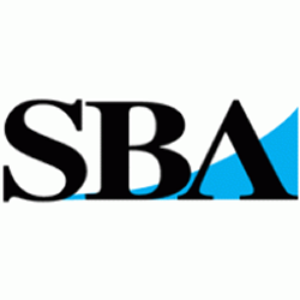SBA Montana sees Loan Volume double this year reaching 323 Businesses with over $186 Million
The Montana District of the U.S. Small Business Administration (SBA) announced “non-COVID” loan data for fiscal year ended September 30, 2021, showing 323 Montana small businesses received over $186 million. Of these loans, 277 for $158,922,700 were made through SBA’s 7(a) Guaranty Loan Program which provides short- or long-term financing for small business start-up or expansion needs. 46 loans totaling $27,669,000 were made through SBA’s 504 Certified Development Company program, providing long term fixed rates financing for land, buildings, and equipment.
Yellowstone Bank was the leading SBA lender in Montana for FY21, with 52 loans totaling nearly $28.5 million followed closely by Glacier Bank with 46 loans. Stockman Bank, Bank of Bridger, Capital Matrix, Dakota Business Lending, Wells Fargo, Three Rivers Bank, Big Sky Economic Development and Valley Bank of Ronan round out the top 10.
Restaurants (full service/limited service), Landscaping Services, and General Automotive Repair were among the most frequently financed businesses during Fiscal Year 2021; with the largest dollar volume of SBA loans financing going to restaurants (food/beverage services). 48 loans totaling $18,516,300 were made to women-owned businesses, 13 loans totaling $2,581,300 were made to veterans, and 22 loans totaling $6,271,400 were made to minority business owners. 101 loans for over $41 million were made to new businesses.
“Montana is not only one of the greatest places in the country to live, but also to start and run a small business.” said Brent Donnelly, the SBA District Director for Montana. “With the grit and resiliency Montana business showed in pandemic 2020, coupled with the dedication of our Montana lenders, a doubling of SBA loan volume is no surprise.”
Top 7(a) Lenders by # Loans
Lender $ # Approved
Yellowstone Bank $28,458,500 52
Glacier Bank $14,677,700 46
Stockman Bank $11,558,900 22
Bank Of Bridger, $5,716,100 19
Wells Fargo Bank, $4,277,300 14
Three Rivers Bank $4,119,500 13
Valley Bank Ronan $3,554300 12
First Interstate Bank $2,186,600 11
U.S. Bank, $ 731,700 8
Opportunity Bank $1,882,000 6
Rocky Mountain Bank $11,183,100 6
Montana Community
Development Corp. $ 678,000 5
Bank Of The Rockies $1,907,400 3
Berkshire Bank $4,228,000 3
Freedom Bank $ 913,500 3
First Home Bank $1,195,000 3
The Bancorp Bank $706,000 3
Mountain America FCU $729,400 3
Manhattan Bank $558,200 3
Newtek Small Business
Finance, Inc. $4,364,000 3
Ascent Bank $1,275,200 3
First State Bank ,Forsyth $547,400 2
Alaska Growth
Capital Bidco, Inc. $3,100,000 2
Dogwood State Bank $4,642,100 2
Fund-Ex Solutions Group $1,694,600 2
Farmers State Bank $460,100 2
Altana FCU $900,000 2
First Community Bank $2,230,000 2
Umpqua Bank $2,804,300 2
Live Oak Banking Co. $8,025,000 2
The First National Bank
Of Mcgregor D/B/A T $2,079,200 1
United Midwest
Savings Bank, $1,710,000 1
First Federal Bank & Trust $150,000 1
Pacific Western Bank $617,000 1
United Community Bank $1,350,000 1
Readycap Lending, LLC $1,165,000 1
The First State
Bank, Shelby $789,100 1
Keybank $943,500 1
Colony Bank $5,000,000 1
Royal Business Bank $1,770,000 1
First Bank Of The Lake $1,450,000 1
Ameris Bank $449,000 1
First Montana Bank, Inc. $2,058,000 1
Celtic Bank Corporation $3,606,000 1
Velocitysba, LLC $512,000 1
Gulf Coast Bank And
Trust Company $455,000 1
1St Financial Bank USA $5,000,000 1
Harvest Small Business
Finance, LLC $515,000 1
Grand Total $158,922,700 277
Top 504 CDC’s by # of Loans
$ Approved #
Capital Matrix, Inc. $5,343,000 16
Dakota Business
Lending $14,494,000 15
Big Sky Economic
Development Corp. $6,683,000 12
High Plains
Financial, Inc. $1,149,000 3
Grand Total $27,669,000 46
Loan Approvals By County
$ Approved #
Yellowstone $50,289,300 96
Gallatin $42,574,900 50
Flathead $27,811,400 41
Missoula $12,920,800 35
Cascade $8,198,400 13
Lewis And Clark $7,725,600 13
Lake $3,518,600 12
Carbon $3,227,500 7
Park $4,384,600 7
Valley $ 490,200 4
Lincoln $1,610,000 4
Custer $1,139,800 4
Richland $ 520,000 3
Deer Lodge $ 679,500 3
Sanders $ 765,400 3
Fergus $ 327,000 3
Ravalli $2,835,900 3
Teton $1,597,900 2
Silver Bow $2,594,000 2
Phillips $2,675,000 2
Jefferson $1,579,000 2
Daniels $1,071,000 2
Granite $ 515,000 1
Blaine $ 10,000 1
Chouteau $ 350,000 1
Powder River$237,000 1
Sheridan $175,000 1
Big Horn $2,400,000 1
Stillwater $416,200 1
Glacier $789,100 1
Dawson $350,000 1
Rosebud $321,600 1
Madison $1,709,000 1
Meagher $783,000 1
Grand Total $186,591,700 323


